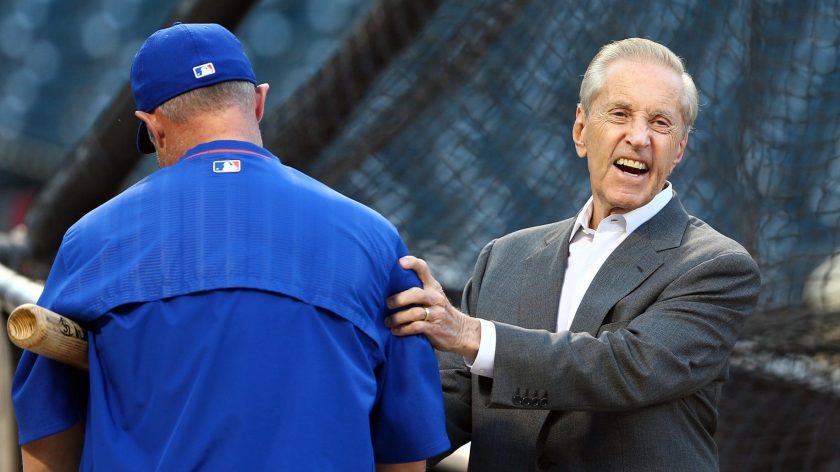New York Mets: When will the payroll reduction end?

Years of cutting payroll have led us here, with the New York Mets continuing to cut payroll even after having success.
It is crazy to think about the fact that roughly a decade ago the Bernie Madoff scandal was uncovered, effectively crippling the Mets and their owners financially.
Luckily for management, the timing of that financial bombshell was well aligned with the consecutive September collapses of the late 2000s.
Despite a fresh financial wound, the team still managed to finish the 2009 season second in payroll behind only their crosstown rival Yankees.
The investment only rewarded the organization with a 70 win season, far below preseason expectations. This was the turning point, and moving forward the Mets began their payroll cutting ways.
The 2010 season saw a payroll of $127,560,042, a cut of $14,669,717 from 2009. The team was able to put a better product on the field winning 79 games, but still finishing a distant fourth in the division.
One year later, the Mets total payroll was back up to $147,0019,341. However, some digging shows that only $96,163,418 of that total was invested in the 25 man roster.
Then came a major slashing in 2012. The Mets total payroll fell to $109,480,476, which was good for 14th in the league and just $1,625,838 above the league average.
The Mets coincidentally were very league average that season, finishing with just 74 wins and yet another fourth-place finish in the National League East.
And what did Mets ownership do to follow up a poor 2012? Well, they stayed the same. Although the cut in 2013 was minuscule, only dropping the total payroll $349,662, the big drop came in the league ranks.
While the Mets maintained status quo, the rest of the league invested, as the league average payroll increased to $114,309,203 leaving the Mets below the line.
And if that was not bad enough, the biggest injustice came in 2014, when the Mets dropped to 19th, I repeat 19th in payroll.
The total payroll fell below the $100 million mark, and only the Miami Marlins had a lower payroll of the four accompanying National League East teams.
The names of the team’s around the league that had a higher payroll were even more appalling. The likes of the Kansas City Royals and Milwaukee Brewers were investing more into their respective teams than a team in New York.
It’s fair to say the Mets and their fans took some lumps in that stretch, but they were accepted. It was understood that the organization would not be able to invest the same dollar figures into the team, while they worked to recoup their losses.
The team was in a rebuild and the young starting pitching had fans excited for a future with more talent and funds. That time came the next year when the team made a run to the World Series.
The money then took a backseat, because who could care about payroll when the team was winning? And they went on to win some more in 2016, making a playoff appearance in the Wild Card game.
Again the money continued to be an afterthought, even though in 2015 the Mets payroll remained below the league average and in 2016, was still outside the top 10.
We know what happened this past season. Injuries and underperformance combined to stop the Mets dead in their tracks.
But, here we are this winter with a strong core still intact. The 1-2 punch of Noah Syndergaard and Jacob deGrom is one that rival teams surely envy and fear.
Yoenis Cespedes and Michael Conforto will be cornerstones in the outfield for the next three years at the least. This makes it all the more puzzling as to why the Mets have not spent to sure up their holes and attempt to compete again in 2018.
ICYMI https://t.co/mbp9HrNmNp what do #Mets have left to spend this offseason — note to their fans: you aren’t going to like the answer.
— Joel Sherman (@Joelsherman1) December 22, 2017
According to Joel Sherman of the New York Post, the Mets will have $20 million less to spend this season than in 2017. This comes after selling away veterans at the trade deadline for cash that many thought would be used this winter for upgrades.
The lack of commitment to even matching last season’s payroll leaves General Manager Sandy Alderson with little to work with. How can he legitimately surround this core with the talent to make a postseason run with these restrictions?
So the question is fair to ask, how much longer do the fans have to deal with this lack of spending? They have rooted for a team in the biggest market in the world, that has cut payroll for the past decade.
And now that they suffered through a rebuild and tasted that 2015 success, ownership has decided to pull the plug on believing in this team.
The money says it all, ownership has given up on this core heading into 2018, the lack of financial commitment makes it obvious. Just how much longer will these mediocre spending levels last? Right now, an end doesn’t seem in sight.
[sc name=”Mets Link Next” link=”https://elitesportsny.com/2017/12/22/new-york-mets-can-learn-from-derek-jeters-transparency/” text=”Mets Can Learn From Derek Jeter’s Transparency” ] [sc name=”Mets Section”]I am a Senior currently attending the Rutgers Business School in New Brunswick. I am a lifelong New York Mets fan, and writing about the team is my passion.






